Alpkit’s Hunka XL is a real bargain, not just compared to a tent, but compared to bivvies too. It's a lightweight, waterproof, spacious bivvy bag for just £70. It’s a simple, no-fuss product with minimal features, but it performs well.
A 20,000mm hydrostatic head rating and fully taped seams ensure effective waterproofing, while the sculpted hood with two drawcords can be cinched tightly around your head (but not 100% sealed). It weighs only 482g, packs down very small and has a roomy interior. What more do you need?
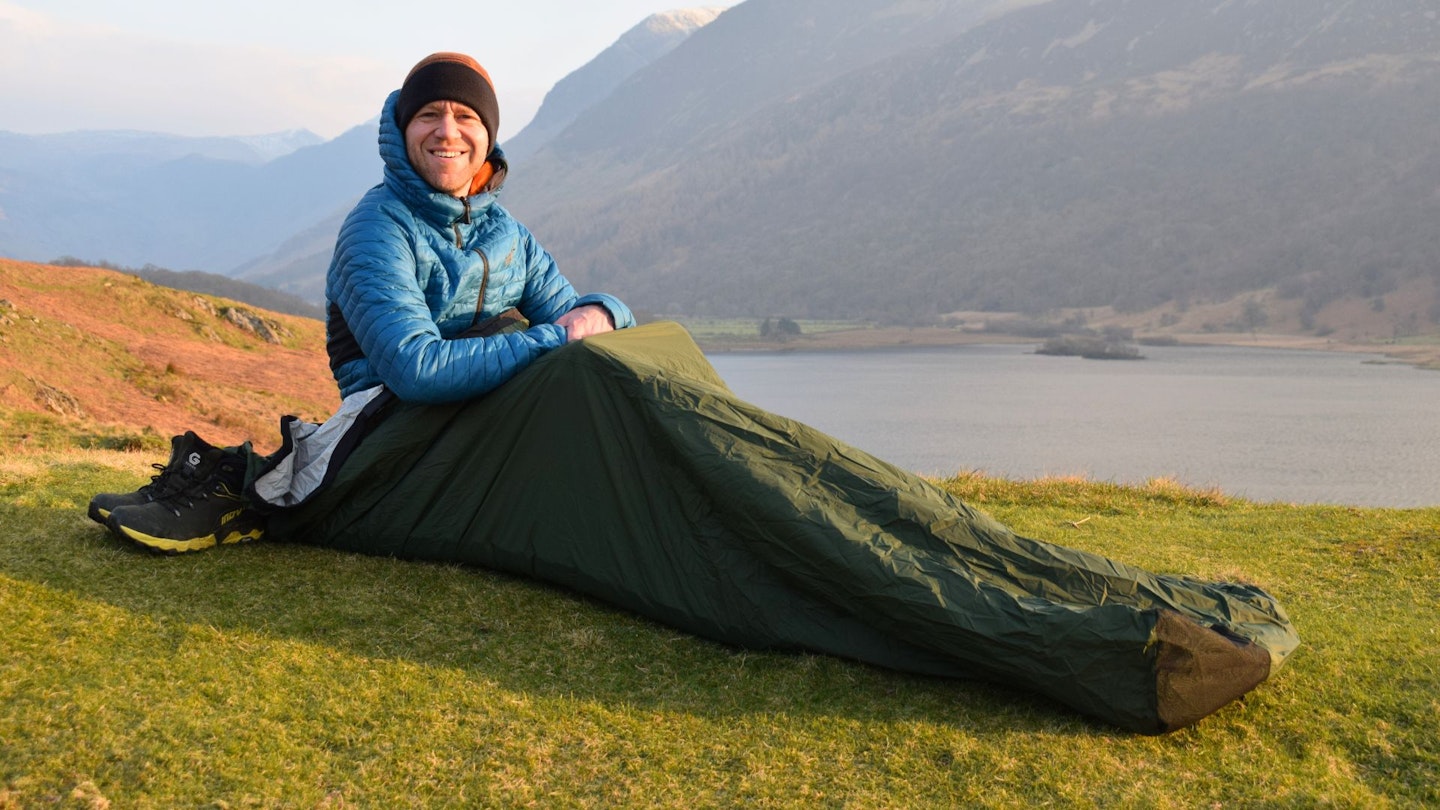 LFTO
LFTOalpkit.com
Pros
- Fantastic value
- Lightweight
- Compact
- Unfussy and minimalist
- Quite sustainable
Cons
- Can't be fully sealed up
- No zipper
| Weight | 482g |
| Packed size | 23 x 16cm |
| Dimensions | 235 x 98cm (shoulder)/72cm (foot) |
| Main material | Recycled and PFC-free 30D 2.5-layer nylon |
| Waterproof rating | 20,000mm HH |
| Breathability rating | 10,000g/m²/24 hour |
Design
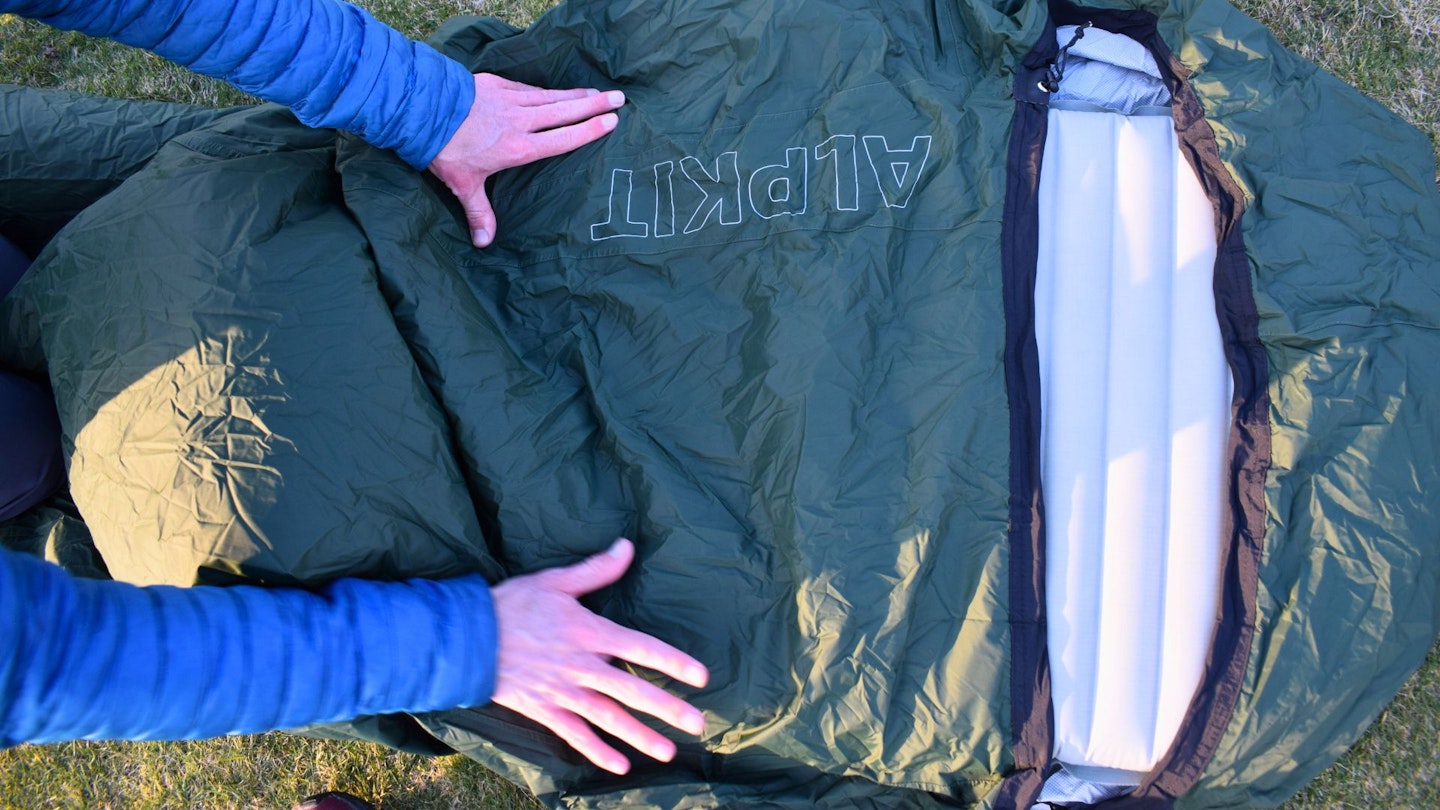
The Alpkit Hunka XL is a simple, no-frills bivvy bag with minimal features. It's little more than a breathable waterproof sack into which you can slide your sleeping mat and bag. There are no zippers, vents or hooped canopies, and no other bells or whistles. There is a single opening at the top, with a hood that can be cinched in via two drawcords, and it all packs away into an integrated mesh pouch.
In fact, the main frill you get is choice of three colourways: red (chilli), green (kelp) and blue (lego). A relative smorgasbord.
Size, weight, and packability
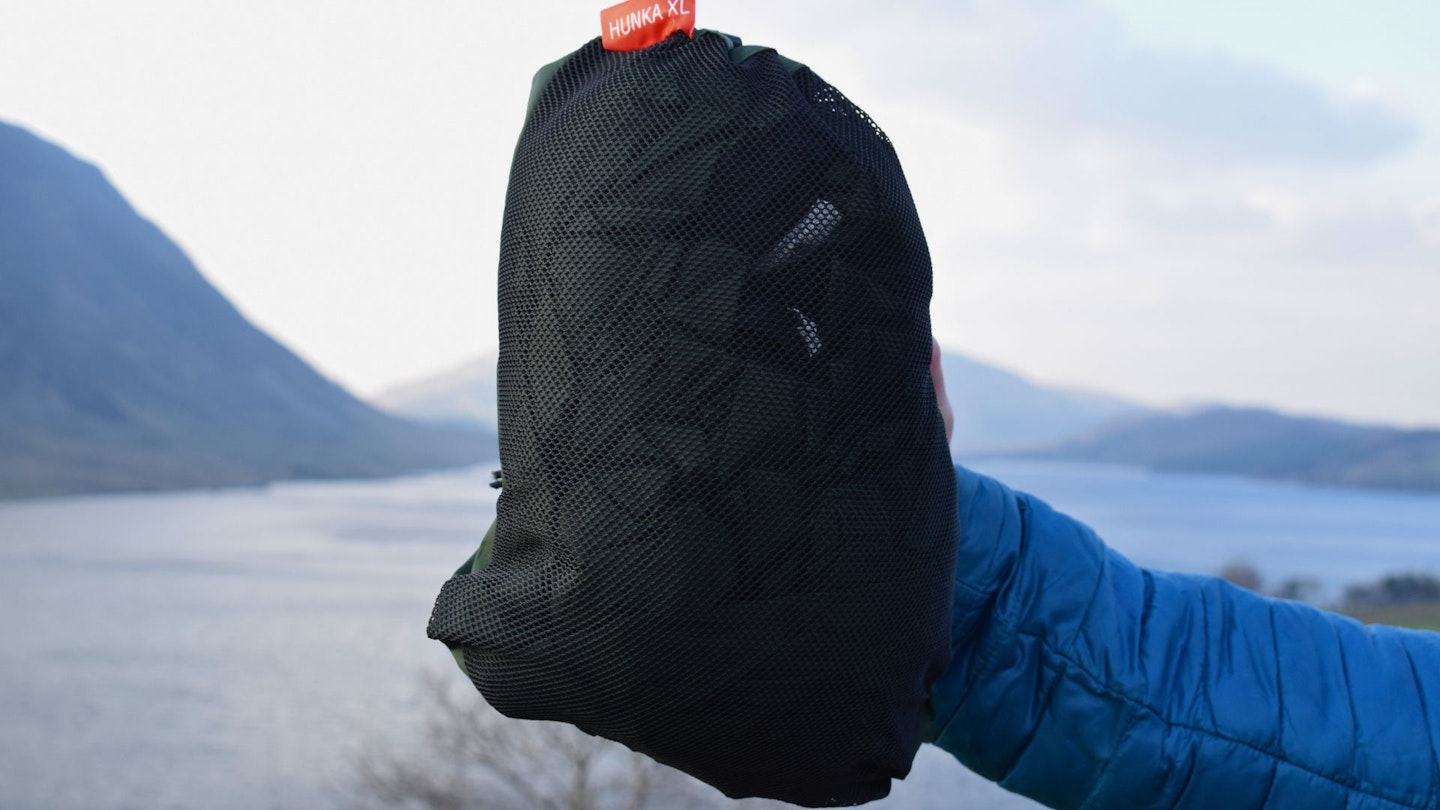
The Alpkit Hunka XL weighs 482g on our scales (the official weight is 490g, according to the Alpkit website). This is superbly lightweight for the price-point and spacious size of the bivvy. Many other bivvy bags are considerably heavier (the Terra Nova Jupiter Lite weighs 636g and the Nordisk Jorund Tech Bivy is 1,242g), but some are lighter too (the Rab Trailhead is 450g and the Mountain Warehouse Waterproof Bivvy Bag is 363g).
The Hunka XL has over-sized, spacious, voluminous dimensions, which are indeed “perfect if you are tall or require extra wiggle room”, as Alpkit puts it. The brands adds that anyone over 6ft 1in should definitely by XL version. The bivvy is 235cm long, 98cm wide at the shoulders and 72cm wide at the feet, with a gently tapered shape and profile. It packs down compactly to 23 x 16cm, stuffed into an integrated mesh pouch with a drawcord closure.

For comparison, the regular-sized Alpkit Hunka costs £55 (saving you £15) and weighs 330g (152g lighter). It is sized 215 x 80 x 50cm (length/shoulder width/foot width) and packs down very compactly to 15 x 13cm. For many adventures, particularly those who are lean and shorter than 6ft, this may be the best option.
We chose to test the larger Hunka XL, not because we’re tall, but because we wanted extra volume to accommodate our sleeping mat and sleeping bag, which the regular-sized Hunka is arguably a little small for. Some bivvy enthusiasts use a different set-up, placing their mat directly on the ground rather sliding it inside the bivvy bag. They only slide their sleeping bag inside the bivvy, and then place this bivvy-and-sleeping-bag combo on top of the mat.

Personally, we don’t like this approach because our inflatable mat could puncture on small rocks or stones or vegetation, and it will be exposed to rain and mud. Instead we place everything inside the bivvy bag for better protection against outdoorsy wear and tear.
With the XL we had space to stash a small 20-30L daypack at the bottom of the bivvy bag, below our feet, to protect it from any precipitation. The downside with the XL is that for some users there will be too much excess fabric and it may feel a bit flappy and imprecise.
Waterproofing and breathability
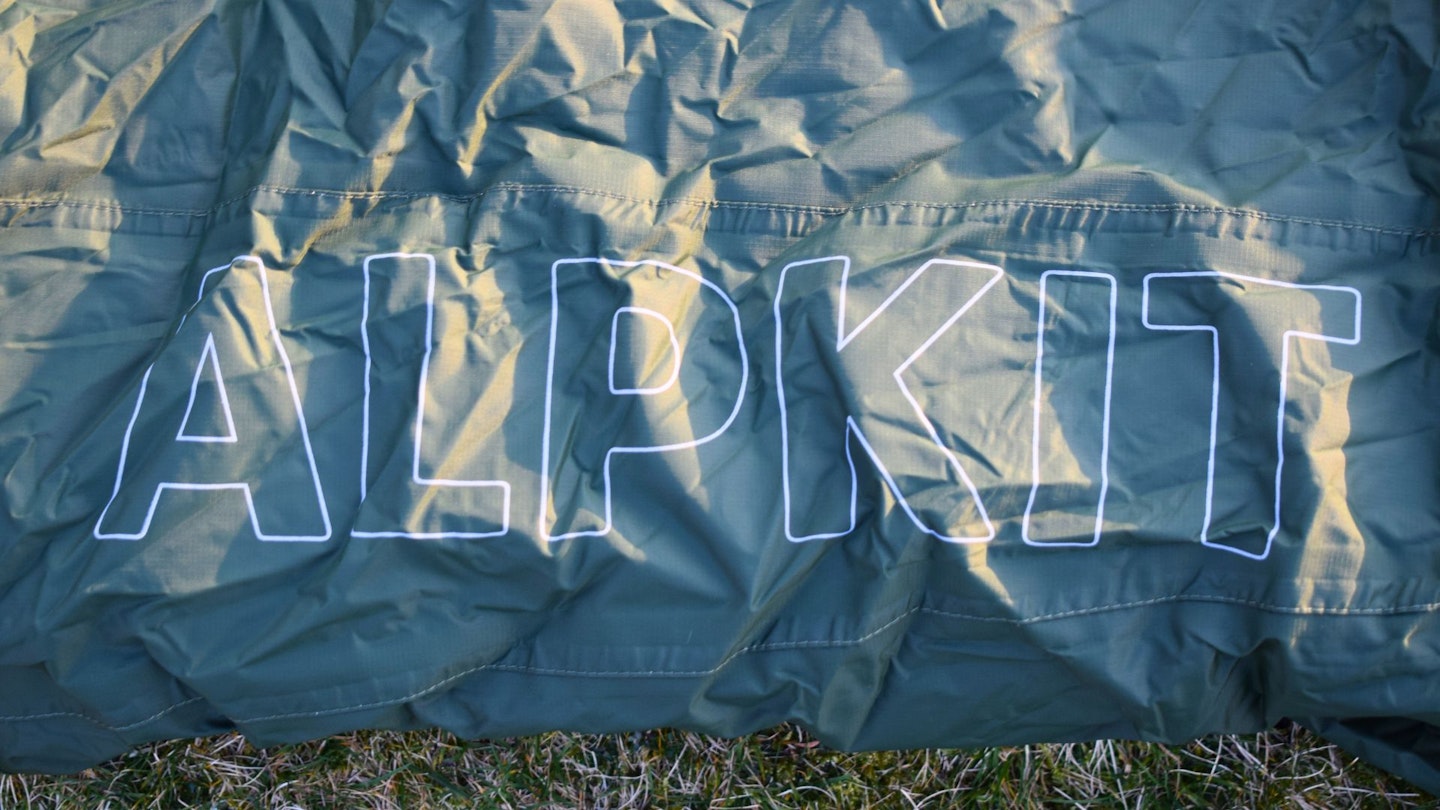
The Alpkit Hunka XL has a 2.5-layer construction, made from a recycled, PFC-free 30-denier ripstop nylon. The seams are fully taped for added water resistance, and the official stats of the material are very solid – a hydrostatic head of 20,000mm and an MVTR breathability grade of 10,000 g/m²/24 hour. All of this means the Hunka XL is technically waterproof and breathable, with very good (although not market-leading) stats.
Don’t forget, however, that there is a big hole in the top of the bivvy bag for you to slide into. This can’t be 100% sealed at the hood, so the Hunka XL – by its very design – has an inherent risk of water ingress at all times. Condensation is difficult to avoid too, as with most bivvies.
In conclusion, at this price-point, the Alpkit Hunka XL does everything it can to protect you from poor weather. But it’s definitely not ideal for inclement weather and we’d describe it as a bivvy for spring and summer, rather than three or four-season use.
Features
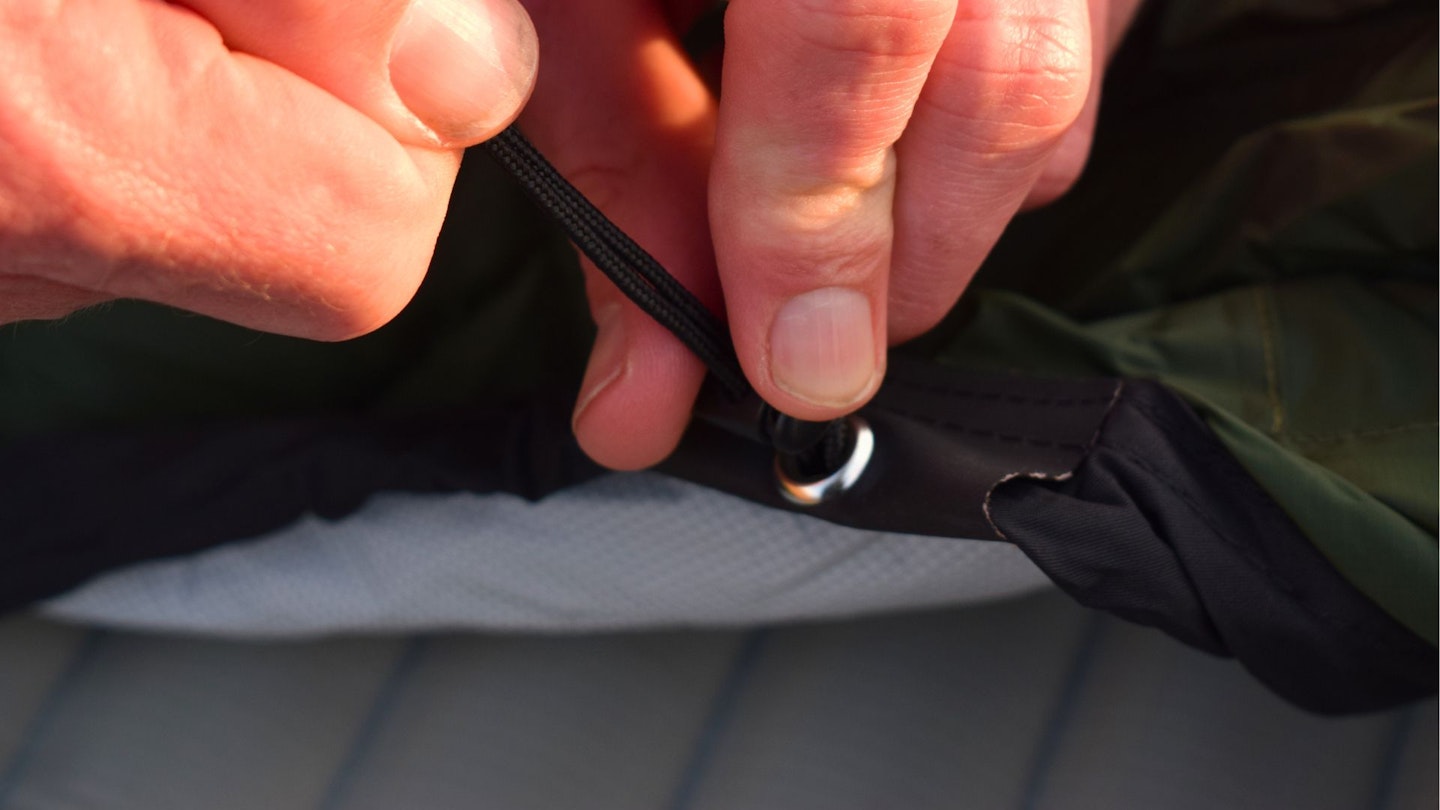
This is a simple, no-nonsense, minimalist bivvy bag, so it’s not blessed with a myriad of features. There are only really two features of note. Firstly you get a sculpted hood, which has two drawcords for cinching it in closely around the face and shoulders, although it can never be fully closed or sealed. Consequently some part of your body is always open to the elements and at-risk of getting wet. A little hack, if required, is to invert the bivvy bag so the hood is on top of your head and the opening below you, thus providing better overall rain protection – but it’s not the “normal” orientation for the Hunka XL.
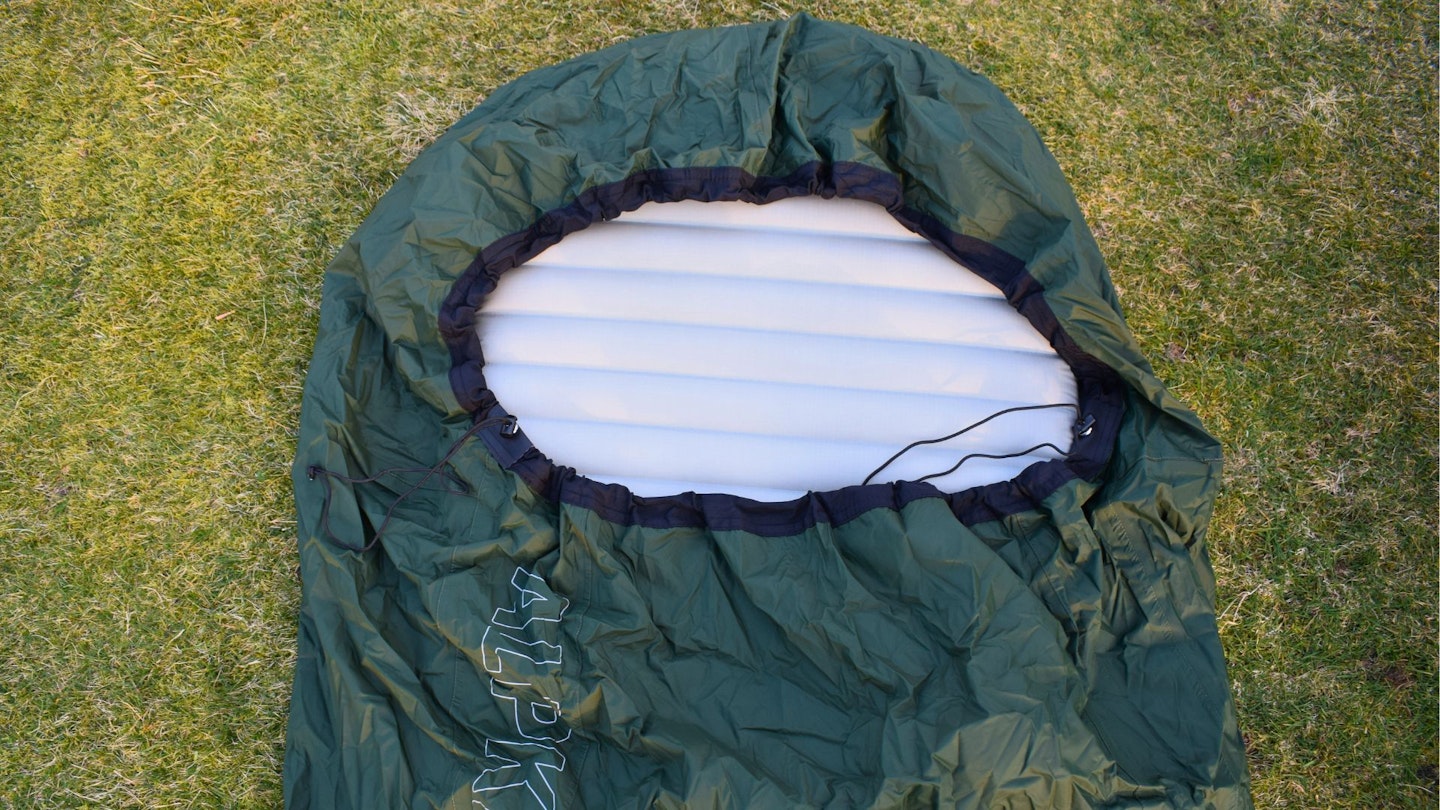
The second main feature is an integral mesh pouch at the base of the bivvy, into which you can stuff the bivvy for hassle-free storage. This works well and negates the need for a separate storage bag.
A few features are notable in their absence with the Hunka XL. There are no zips anywhere on the bivvy, so getting in and out of the bag involves squirming your way in from the top opening, which is difficult to do gracefully.
Verdict

The Alpkit Hunka XL is a high quality, no-frills bivvy bag that does the job at an incredible price – but your head is always exposed to the elements.
How we tested
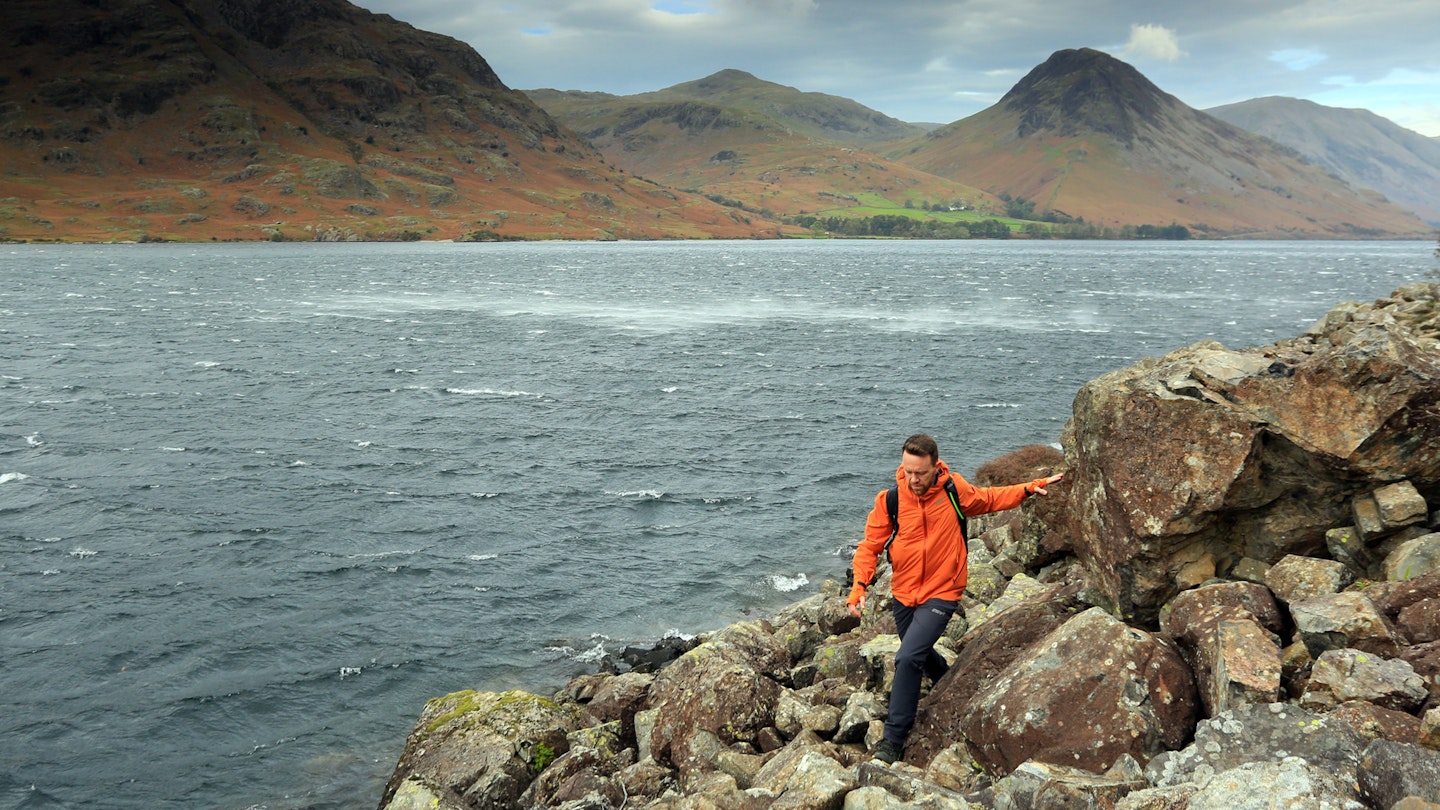
The Alpkit Hunka XL was tested and reviewed by James Forrest. James is one of LFTO's primary freelance gear testers (he also conducts reviews and writes features for our magazine, Trail). When it comes to wild camping and backpacking in Britain, James is about as experienced as it gets, having achieved impressive feats such as climbing all 1,001 mountains across the UK and Ireland in the fastest known time.
